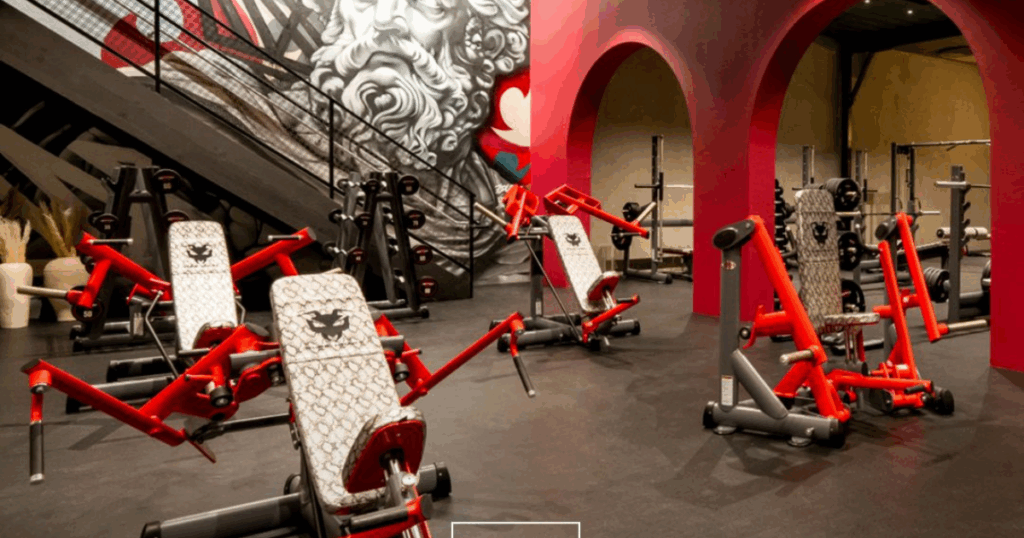Introduction: Why Ergonomics and Customization Matter in Modern Training
Athletes today demand more from their training than just heavy weights and repetition. Whether you’re an elite competitor or a seasoned lifter in gyms like Gold’s Gym, One Health, Vida, John Reed, or Fit Athletic Clubs, the equipment you use has a direct impact on performance, safety, and longevity. This is where ergonomics meets customization—a design philosophy that ensures machines align with natural human movement while adapting to the specific needs of athletes.
German-engineered brands such as Gym 80 have set the gold standard by crafting welded (not bolted) machines with precision biomechanics and advanced resistance curves. The result? Smarter designs that protect joints, reduce injury risks, and deliver superior muscle engagement for long-term growth.
What Is Ergonomic Fitness Equipment?
Ergonomics in fitness refers to how well a machine matches the body’s natural biomechanics. Unlike poorly engineered machines that force users into awkward angles, ergonomic strength equipment moves in harmony with human joints, tendons, and muscles.
Key Benefits of Ergonomic Design:
- Reduced Joint Stress: Proper alignment decreases unnecessary strain on knees, shoulders, and hips.
- Injury Prevention: Quick start pedals and supportive adjustments place users in safe starting positions.
- Enhanced Muscle Recruitment: Smooth resistance curves keep muscles under constant tension.
- Better Training Outcomes: Athletes achieve hypertrophy, strength, and endurance without compromising long-term health.
In short, ergonomics protects athletes so they can train harder, longer, and smarter.
Customization: Why One Size Never Fits All
Every athlete’s body is unique. Height, limb length, flexibility, and strength ratios all influence how effective (and safe) a workout is. This is why customizable fitness equipment is essential in modern training facilities.
Gym 80’s 80Sygnum and Pure Kraft Series machines, for example, allow athletes to:
- Adjust seat height, angles, and grips.
- Personalize resistance through weight stacks or plate-loaded systems.
- Benefit from resistance curves that mimic free-weight training.
Customization ensures that equipment adapts to the athlete, not the other way around.
Biomechanics Meets Performance: Protecting Joints While Building Strength
At the heart of smarter design is biomechanics—engineering machines with customization to move exactly as the human body does. Poorly designed machines can create dangerous torque, limit natural motion, and stall progress. Gym 80’s machines are built to:
- Match natural movement arcs (e.g., pressing, pulling, squatting).
- Minimize stress on connective tissue while maximizing muscle engagement.
- Support proper breath work: exhale during concentric (lifting), inhale during eccentric (lowering).
For bodybuilders, powerlifters, and competitive athletes, this isn’t just a feature—it’s a necessity. Proper biomechanics protect the investment in years of training by reducing overuse injuries.

Case Example: The Pure Kraft Series for Athletes
The Pure Kraft Series has become a favorite among experienced lifters and competitive athletes. Why?
- Precision Resistance Curves: Rare in plate-loaded equipment, they allow for natural strength progression.
- Welded Construction: Unlike bolted machines, Pure Kraft’s welded frames never loosen under heavy training stress.
- Greater Time Under Tension: Enhances hypertrophy and strength adaptation.
This level of design reflects why athletes at facilities across North America—from Gold’s Gym to Elev8tion Fitness—rely on customized, biomechanically precise machines.
Durability and Safety: Built for Decades, Not Seasons
Durability is not just about longevity—it’s about safety. A machine that loosens, wobbles, or fails under load puts athletes at serious risk. Gym 80 ensures safety through:
- Welded Frames for maximum stability.
- 25-year warranties on frame stability and weld seams.
- Premium upholstery and materials designed to withstand heavy commercial use.
- Eco-friendly finishes that avoid harsh chemicals or alcohol-based cleaners, protecting both the equipment and the environment.
This dedication to quality ensures gyms and athletes can trust their investment.
Athlete-Centric Design in Action
Professional athletes and experienced lifters consistently highlight how ergonomics + customization impacts their careers:
- Joint Longevity: Lifters can train heavy without chronic pain.
- Consistency: Athletes maintain form across sessions due to intuitive machine design.
- Performance Gains: Optimized muscle loading leads to better strength, power, and hypertrophy.
A quote from a seasoned bodybuilder at John Reed Fitness sums it up well: “Machines that follow my body’s natural path let me train harder without worrying about injuries creeping up over time.”
Quick FAQs
What makes ergonomic gym equipment safer?
Ergonomic equipment aligns with natural biomechanics, reducing joint stress and preventing overuse injuries.
Why is customization important for athletes?
Customizable machines adapt to an athlete’s body dimensions and strength curve, maximizing performance and minimizing risk.
How do Gym 80 machines differ from competitors like Technogym or Life Fitness?
Gym 80 focuses on welded construction, superior biomechanics, and resistance curves engineered for serious athletes, whereas competitors often prioritize mass-market versatility over advanced customization.
Can beginners use ergonomic machines?
Yes—but the machines are not designed only for beginners. They suit everyone from first-time lifters to competitive athletes, ensuring safe and effective training.
Conclusion: Smarter Design for Safer, Stronger Athletes
When ergonomics meets customization, athletes win. Smarter machine design protects joints, prevents injuries, and ensures peak performance. Gym 80 has spent over 40 years perfecting this balance, offering equipment trusted by professional athletes, competitive lifters, rehabilitation centers, and fitness enthusiasts worldwide.
In an era where performance and longevity go hand in hand, investing in biomechanically precise, customizable, and durable equipment isn’t a luxury—it’s essential.

